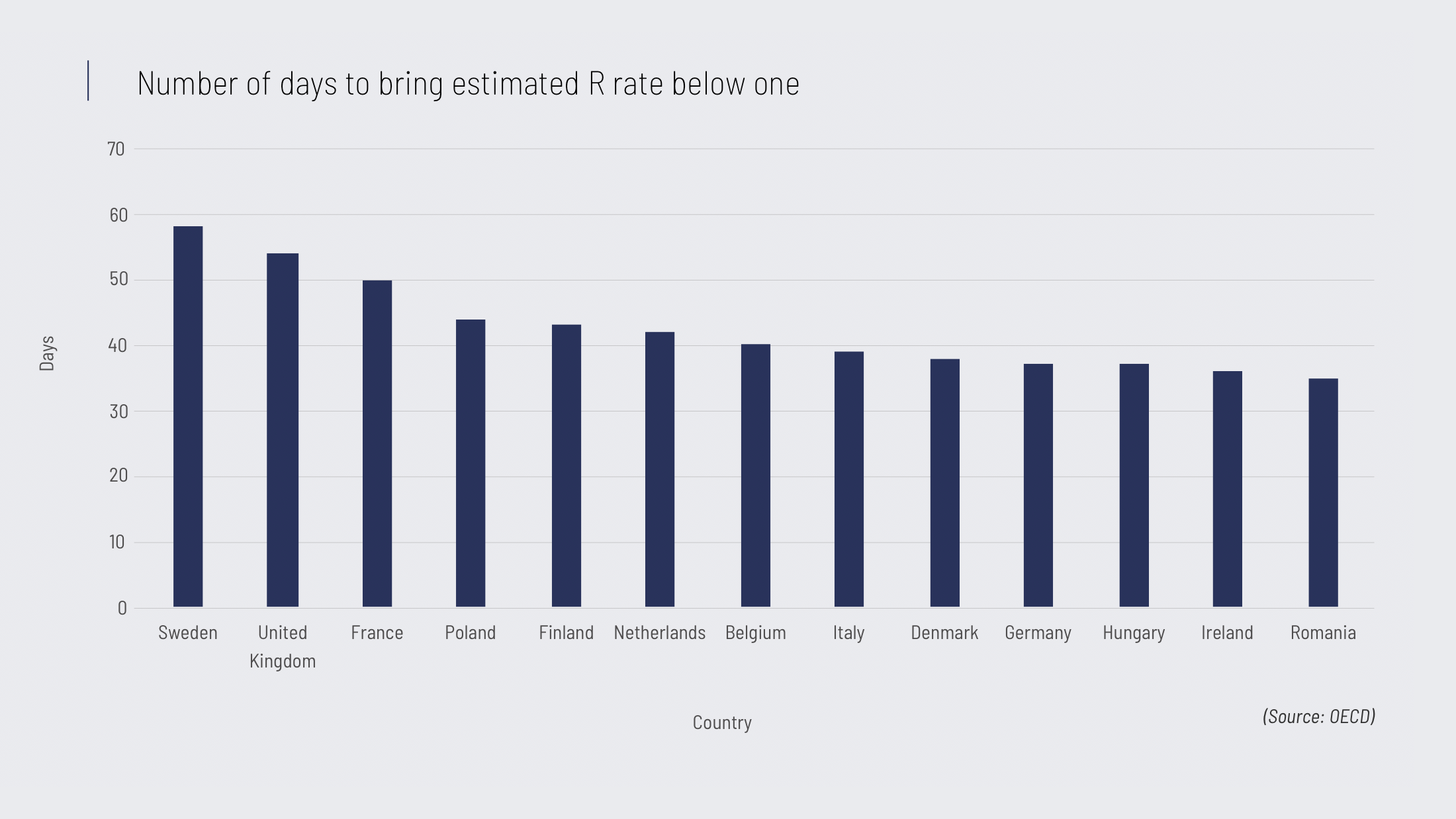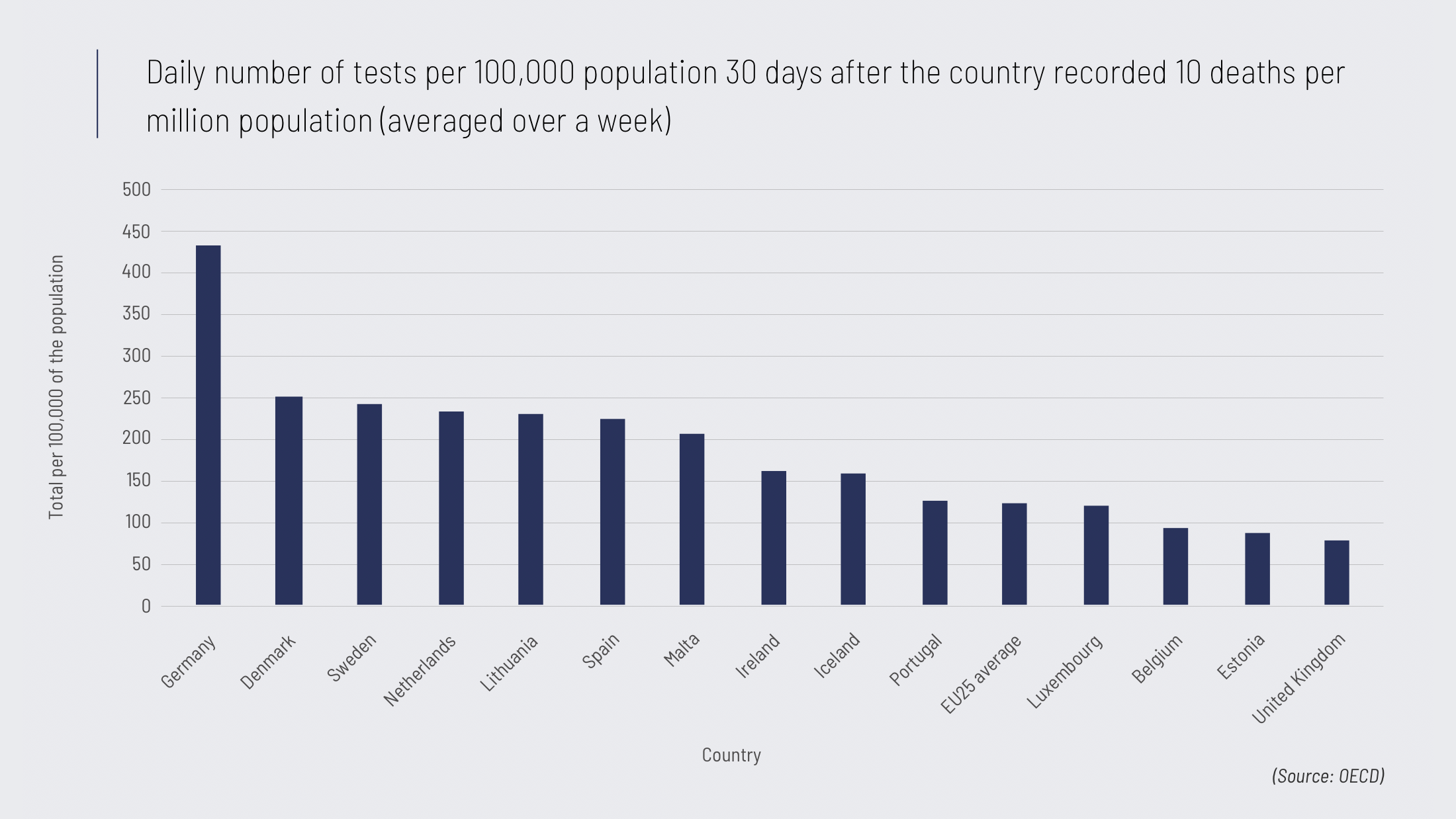Health at a glance

An annual report on the state of healthcare in Europe and further afield has found that Ireland had the longest lockdown in Europe for non-essential retail, pubs and restaurants and the second highest per capita health spend as a result of the Covid-19 pandemic.
The Organisation for Economic Cooperation and Development’s (OECD) annual report, Health at a Glance, found that Ireland had the longest lockdown for what they term public spaces (parks, restaurants, pubs, cinemas, non-essential shops) with services closed for 120 days from 12 March. The closest countries in terms of length were Finland, Slovakia, Bulgaria and Estonia, who shut public spaces for 74, 66, 65 and 65 days respectively.
Ireland was also one of only six countries of the 36 reported on to close both primary and secondary schools up to the summer holidays, the other five being Bulgaria, Finland, Italy, Spain and Latvia. The Health at a Glance report compiles and compares the health policies of 36 countries, including the EU27, the UK, Turkey, Switzerland and Norway.
Alarmingly, the report states that Ireland had the lowest number of ICU beds in Europe before the outbreak of the Covid-19 pandemic, with just five beds per 100,000 people; in contrast, the EU14 (members prior to 2004) had an average of 12.9 beds per 100,000 people, with Germany ranking highest with 34 beds per 100,000. By combining data of the maximum daily number of Covid-19 patients occupying ICU beds in the first half of the year and the estimates of total ICU beds, the report manages to give insight into countries’ resilience to the outbreak.

By doing so, the OECD estimates that 80 per cent of regular pre-crisis ICU beds in Italy would have been occupied by Covid-19 patients. For Belgium, Ireland and France, this figure is 65 per cent. Ireland, as the report notes, added 399 new ICU beds to its capacity during the pandemic, an extra 8.1 beds per 100,000 people. Only Germany and the United Kingdom were found to have higher levels of post-Covid health expenditure than Ireland, with €302 and €446 per capita spent respectively as compared to Ireland’s €274 per capita. However, it must be noted that the data used for Ireland’s expenditure ceases on 12 May, while Germany’s does so on 18 September and the UK’s does so on 8 July.
Despite the high level of spending per capita, the long lockdown and the increase in ICU bed capacity, Ireland still had the third highest death rate in Europe for over 65s relative to population. By early October, the rate in Ireland was 2,359 deaths per million. Only Belgium (4,343 deaths per million) and the UK (4,302 deaths per million) fared worse in this regard. Up to the end of October, Ireland’s overall death rate per million sat at 390, slightly above the EU average of 380 deaths per million. However, Ireland’s rate is not near the worst of the death rates per million, with Belgium (1,015 per million), Spain (764) and the UK (699) making up the three worst affected states in this regard.
Of the countries surveyed, Ireland again is not among the worst affected in terms of confirmed Covid cases per one million. A rate of 12,531 places it on better footing than France, Luxembourg, the Netherlands and Spain, which all have cases in the 20,000s per one million, as well as Belgium and the Czech Republic, who have both recorded confirmed case numbers in the 30,000s per one million. Ireland is the only one of the countries reported on where excess mortality figures and rates are not supplied. As a whole, the EU27/26 recorded 164,612 excess deaths from March to June, at a rate of 372 per million people. Notably, Bulgaria Croatia, Hungary, Iceland, Latvia, Norway, Romania and the Slovak Republic have all managed to reverse trends and record less deaths than would be typically expected.
Among the 22 European countries who supplied data available by age group, deaths of people aged 60/65 and over were on average 3.7 times higher than the overall population. 90 per cent of Covid-19 deaths occurred in the population aged 60/65 and over, with those aged 80 and over accounting for roughly half of all Covid-19 deaths. In terms of total deaths of those aged 60 and over, the UK, Italy, Spain and France all reported over 17,000 deaths as of mid-September.

In 13 European countries with available data, there were 75,000 deaths among residents of long-term care facilities. The report notes that absolute numbers of deaths of long-term care residents were particularly high in the UK (25,466 deaths), Spain (20,649 deaths) and France (14,955 deaths), “all countries that suffered heavily from Covid-19”. When adjusted for population size, deaths among the residents of long-term care facilities were equivalent to over 5,000 deaths per million people aged 80 or over in Belgium, the UK, Spain, Ireland and Sweden. Deaths among residents of long-term care facilities accounted for over half of all reported Covid-19 deaths in Spain, Belgium, Ireland and Norway.
The report notes that Europe had had two major waves of infection by the time of its publication, with 10 million confirmed cases and 265,000 with rates of death estimated between 0.17 per cent and 1.7 per cent. The report also notes that some countries, both within and outside of Europe, have managed to mitigate the economic and health impacts of the pandemic.
Outside of Europe, Korea is cited as a “good example of a country that has managed to control the Covid-19 outbreak through quick, effective and targeted measures, thereby avoiding full lockdowns”. New Zealand is cited as “another successful example”. In Europe, Norway, Finland and Estonia are cited as countries that “were better able to contain the spread of the virus and mitigate the economic consequences, in part because of geographic factors (lower population density) but also because of timely implementation of targeted containment measures, and strong trust and compliance by populations”.





